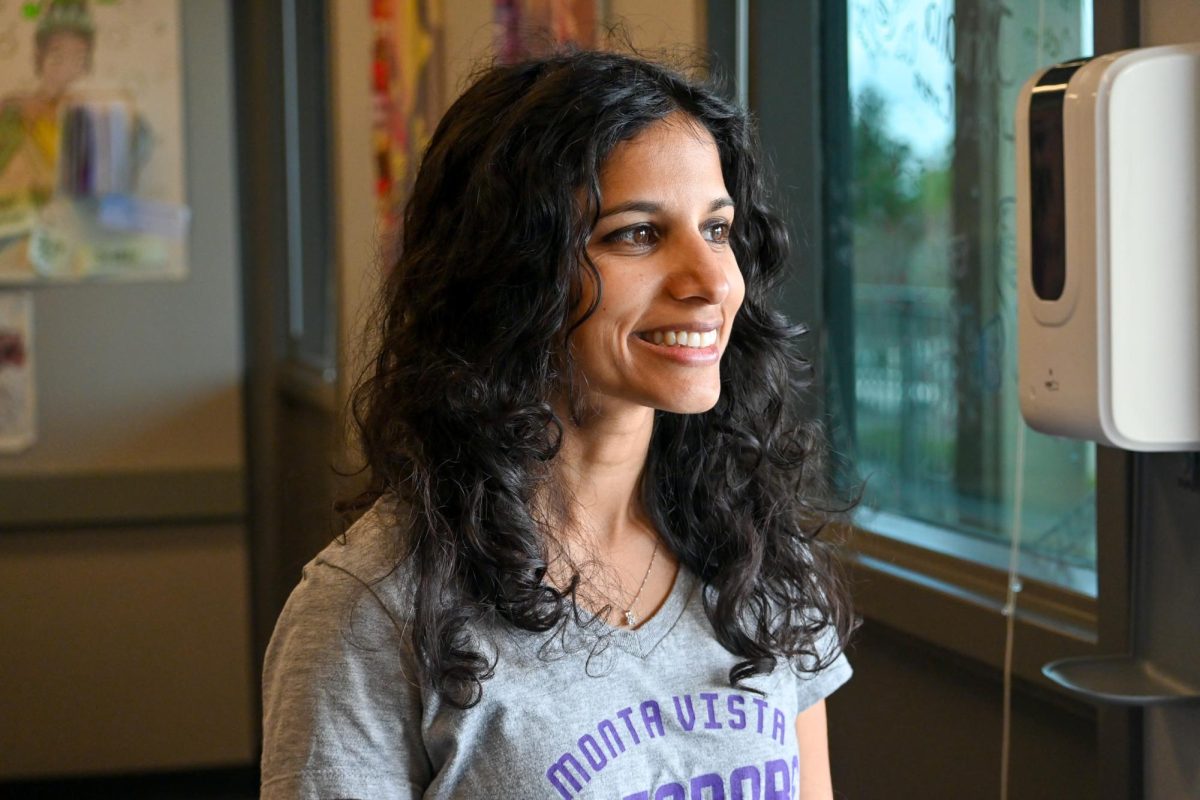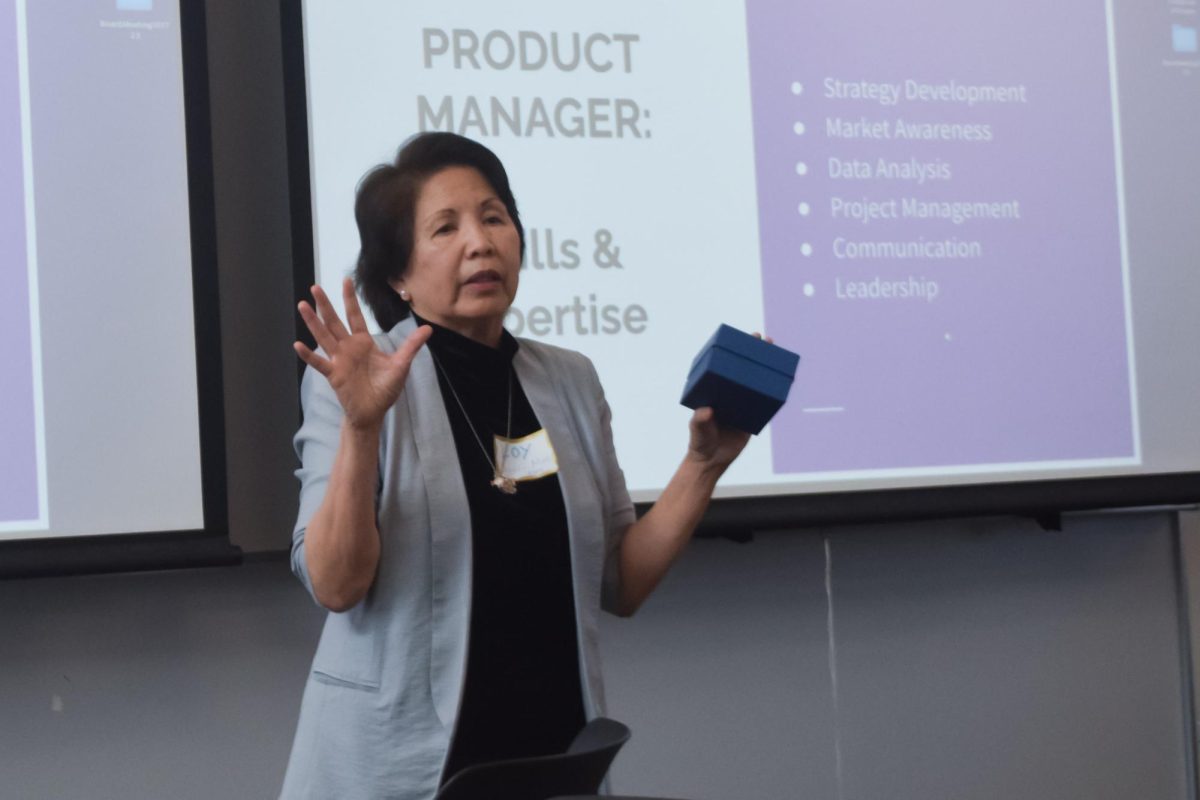PTSA invites Stanford BeWell coordinator to help students and parents draft a customized college application roadmap.

Guest lecturer Syrous Parsay walked around the library to welcome parents and students to the first session of PTSA’s two-part “Roadmap to the College Application” seminar on Oct. 12. The PowerPoint presentation projected behind him featured a wrapped gift box –– attendees of the seminar were eager to find out what was inside.
“I think there was a lot of mystery in the gift,” junior Rei Takahashi, who attended the seminar with her father, said. “I never thought it would include things like ‘stress.’ I am an only child so my family had never been through the process. Attending the [college application] seminar was an important step for my family.”
Parsay commenced the seminar by addressing the gift box and revealed that it contained helpful information regarding the college application process. However, he mentioned that the box also presented an overarching perspective that would benefit MVHS parents and students: That college applications can strengthen the bond between students and parents, lowering short-term stress while building long-term unity, a prospect both parties would benefit from. Over the course of the lecture, Parsay outlined facts and statistics specific to the Class of 2013 to offer a rough idea of the steps that rising college applicants should start taking during their sophomore year.
“This seminar is geared towards sophomores and juniors,” Parsay said. “Seniors can benefit from this too, but the relationship between parents and students needs to be built earlier on during the college application process.”
As the Assistant Coordinator of Stanford University’s BeWell program, a resource that fosters healthy habits within the university’s staff and community through workshops and community outreach, Parsay shared his insight about the importance of parent-student interaction. He described profiles of high school students with 4.5 GPAs and 2400 SAT scores who succumbed to academic and social pressures at college. Specifically, he witnessed that, similar to students from many other colleges, Stanford students who were not comfortable with sharing their problems with parents or counselors turned to alcohol for support.
According to Parsay, the decision-making process behind the college application –– choosing the schools that fit each student, the topics to select for college essays –– is one that can be enhanced through candid discussion between students and parents.
“My father and I did talk about where I would like to go to school: Inside California or outside of the country,” Takahashi said. “But I had never talked about it with the entire family.”
The approach that Parsay suggested that MVHS families should adopt is called “Planning Your Work,” in which students and parents communicate as mentor and mentee or trusted friends. They use each other as “sounding boards,” debating and making decisions about the application together. An additional idea that Parsay introduced was the “Law of Averages.” Parsay revealed that over 60 percent of the graduating class of 2013 went to school in-state. He extrapolated that the scenario will be similar in the coming years and that the tool of averaging can be applied to both GPAs and standardized testing scores to predict where students will secure admission.
In order to prove his point, Parsay ran a verbal survey in which he had students from the audience generate a list of their desired schools. The responses consisted of top-tier schools including the Ivies, as well as Stanford University, UCLA and UC Berkeley. He then surveyed the parents. Except for a couple of differences in college options, the students’ list matched the parents’ list.
“There isn’t much disparity between the students’ goals and the parents’ desires,” Parsay said. “However, in this list, only two schools –– UCLA and UC Berkeley –– have an average acceptance [rate] that is over 9 percent. Where are these high expectations coming from?”
According to Parsay, the academic stress that students may continue to experience at college stems from unreasonable pressure that students face in response to parents’ hopes and social expectations. Consequently, it is the gift of a deeper, more supportive relationship between parents and students that Parsay emphasized throughout his lecture.
“I think that Mr. Parsay’s lecture was a nice wraparound of depth and breadth,” said Ravita Saluja, the mother of a freshman and senior at MVHS. “I believe that students do the best when they are [with] friends, are happy and learning. The [different perspective] indicated that the college process is really not a crisis.”
Syrous Parsay will host the second part of the “Roadmap to the College Application” seminar on Oct. 26 at 10 a.m. in the library. Part two will feature specific advice on how to draft the essay, manage stress and profile colleges.





















